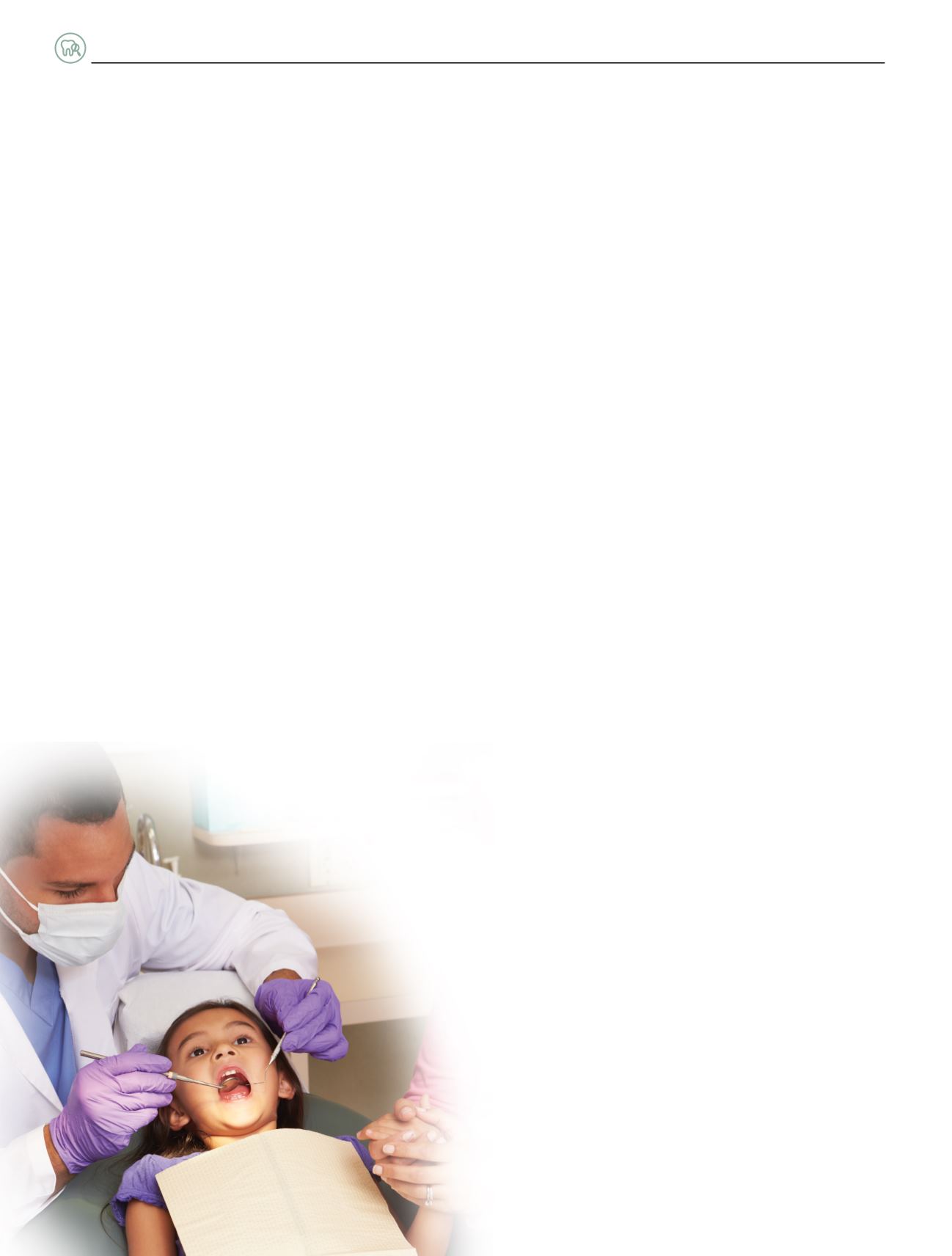

S
upporting
Y
our
P
ractice
Use of Dental Services for Children
A smaller proportion of children of newcomer families have
regular dental visits compared with non-newcomers.
4,13,24,
26-28,36-39
In addition, newcomer children are most likely to visit
a dentist for emergencies or when in pain.
26,28,31,36-38
It seems that parental education remains a predictor of
dental care utilization. A study among Chilean newcomer
families in Montreal shows that children of parents with
a university education are twice as likely to visit a dentist
compared with children of parents without higher
education.
30
Limited English proficiency has also been shown to hinder
access to dental care for children of newcomer families.
12,13
Barriers to Appropriate Oral Health for
Newcomer Children
Risk factors reported to act as barriers to achieving and
maintaining adequate oral health for children of newcomers
were grouped into 3 levels: child, family and community.
➙
Child level (oral hygiene practices):
Children of newcomers
and foreign-born parents differ from non-newcomers in
their oral hygiene practices; tooth brushing or flossing is not
carried out regularly (or at all),
14,37,40
nor are these practices
valued by the children or their parents.
12
➙
Family level (parenting practices, oral health
perceptions):
A higher percentage of foreign-born mothers
of 19-month-old infants in Alberta reported the use of
nursing bottles compared with Canadian-born mothers
(85% vs. 62%).
35
➙
Community level (dental insurance, dental care
provider):
Newcomer populations are more likely to be
uninsured
18,22,24,26,34
and more likely to rely only on
public health insurance or no insurance at all.
22
Interventions for Newcomer Children
Three studies
3,8,19
explored intervention programs developed
to improve the oral health status of newcomer children; 2 of
them targeted parents and the other targeted children.
➙
Programs for parents:
An educational program among 20
newcomer Latino parents of low socioeconomic status was
successful in improving the knowledge of 10 participants;
however, only 5 showed an improvement in reported
behaviour.
8
In a health promotion program in Vancouver,
British Columbia, designed to educate Vietnamese mothers
of preschool children with extensive tooth decay, mothers
who had more than 1 counseling session reported significant
reductions in the use of a nursing bottle for their children
during both sleep time and day time.
19
➙
Programs for children:
In a school-based program, dental
services provided for newcomer and impoverished children
were successful in reducing the need for restorative care in
the second year of its implementation.
2
Discussion
This scoping review aimed to provide a better understanding
of the oral health of newcomer children in North America.
Although various oral health strategies, including increased
accessibility and some publicly funded dental services
(usually for emergency care) are in place for children from
low-income families or those on social assistance,
41
many
Canadians still do not have easy or affordable access to
dental health services.
A case in point is the proposed cuts to dental benefits for
newcomers to Canada under the Interim Federal Health
Program.
9
The limitations and problems with this program,
for both providers and newcomer patients, have been
outlined in a report by Amin and colleagues.
42
Regardless of their birthplace, many studies have shown
that children of newcomers have worse oral health than
their non-newcomer counterparts.
5,16,37
Several barriers
play a role, such as cost of regular dental care, insufficient
dental insurance coverage, language and parental beliefs
and practices that put the children at higher risk for dental
diseases.
26,36,37
Higher Levels of Caries
Newcomer children have consistently been shown to have
higher levels of caries.
33
A more detailed study of these
children is needed to identify which group is in the majority:
Canadian-born children of newcomer parents, foreign-born
children who have been raised in Canada or foreign-born
















